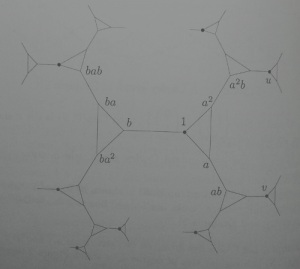I’m currently profiting from the vacations to clean-up various aspects of my tentative to obtain explicit expansion bounds for subgroups of which are Zariski dense in
. To review the previous episodes, there are three basic ingredients that needed to be made explicit:
- basic multiplicative combinatorics;
- Helfgott’s growth theorem;
- the Bourgain-Gamburd expansion criterion (especially the so-called “
-flattening” lemma).
I’ve already talked about the first and second. For the growth theorem, after a few more changes, my current result is that any generating subset of
satisfies either
or
(with no condition on ).
For multiplicative combinatorics, I have reworked the argument after noticing the fact (certainly obvious to all cognoscenti) that, for the purpose I need it, one can work mainly with symmetric sets, for which the basic relation between tripling constant and growth of -fold product sets is quite a bit better (in explicit terms) than the corresponding one of “mixed”
-fold products involving either a set or its inverse. This gives much better exponents.
The most important gain comes, however, from a second look at the Bourgain-Gamburd inequality. The point is that they argue from a “dyadic” viewpoint, considering (in effect) the steps of a random walk (for a suitable starting point
where the walk has started to expand non-trivially). Each step from
to
gives a fixed improvement of the counting of closed geodesics of the corresponding length, and the number of steps which is required is directly related to the spectral gap one obtains.
From a qualitative point of view, there is nothing to argue with this. But if one wants to get explicit constants, one notices (this is also certainly known to the aforementioned cognoscenti, as shown by Helfgott’s comment on my previous post…) that the argument of Bourgain-Gamburd works essentially just as well for steps of the random walk: what is needed is a small adaptation of their main inequality to bound the spread of products
where
and
are independent random variables with
at least “as well spread out” as
.
Apart from this last part, which I will include soon since I just wrote down the details, I’ve incorporated these improvements in my notes. The last point, rather satisfyingly, improves exponentially the estimates for spectral gaps: for the Lubotzky group, it becomes now , instead of
(for
large enough, and I confess that I don’t yet know what this last condition means explicitly…)
We’re not yet in the realm of really macroscopic numbers, but this is certainly encouraging…

